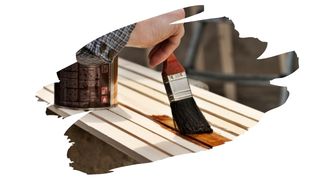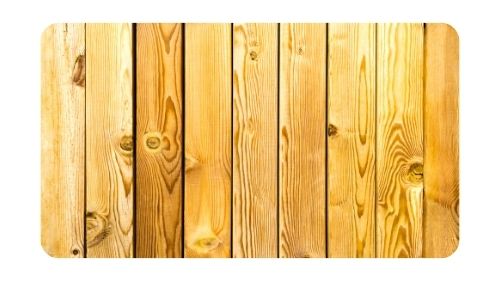It’s naturally sourced, can bind to almost any type of surface, and it’s is also water resistant.
So, what finish can do all of these things and more besides? Shellac, obviously!
This natural sealer doesn’t fade or discolor as it ages. And it can be easily rubbed on to leave behind a highly glossy finish.
Sounds great, right! In fact, what can’t shellac do?
Well, here’s the thing. For all of its advantages, there is one key disadvantage to this sealant… and that is its durability. Or rather, it’s lack of it.
Shellac is a little too easy to scratch for it to ever be used as a reliable top coat. It is just too brittle.
You see, something like polyurethane sealer has a little bit of elasticity to its coat – even after its dried and cured. So polyurethane is very capable of shrugging off any abrasions reasonably well.
However, a shellac film coat is very rigid. Which means that it can easily pick up nicks and abrasions without even trying.
In other words, shellac is better used as a sealing undercoat. But as a final top coat, it is going to cause you all sorts of refinishing headaches later on.
This is where lacquer comes in.
Lacquer is a much more scratch-resistant resin than shellac. And when you coat it over shellac finish, it can seal it with a tough top coat.
Do You Need A Top Coat For Shellac? Yes you do. This stuff isn’t very durable without one. And can easily succumb to everyday wear and tear.
But – and this is a very important but – the exact type of shellac you use matters. As does the precise type of lacquer you plan to use.
So, let’s get into it…

This post may contain affiliate links to products that we receive a commission for (at no additional cost to you). Learn more here.
First Off, What Kind Of Finish Can You Put Over Shellac?
You can put any finish over shellac, provided that you use a dewaxed shellac product. This is because natural shellac is packed to the brim with wax.
And it is this waxy ingredient that makes it almost impossible for natural shellac to stick to anything. As well as making it absurdly difficult for anything to stick to shellac in turn.
Now, if you remove all of that wax, you end up with a substance that is incredibly sticky. This Dewaxed Shellac product will stick to virtually anything… wood, concrete, glass, you name it.
And if you apply a finish onto this Dewaxed stuff, it will stick and stay put with ease.
Long story short, if you use Dewaxed Shellac, then you can put most finishes over it.
Related Post: Is Shellac A Good Finish For Outdoor Furniture?
Liberon makes a fantastic Dewaxed Shellac that is transparent enough to apply on even light pale types of timber.
You can check out the latest prices for Liberon’s Blonde Dewaxed Shellac over on Amazon.com
Is Shellac The Same As Lacquer? No, they are not the same. Shellac is a natural amber product sourced from the female lac bug, (also referred to as Laccifer lacca). While lacquer is a clear substance made from a manufactured blend of clear nitrocellulose and solvents.
That Means Lacquer Can Be Used Over Shellac? Great!
Sure… but before you go rushing off to get to work, there is one main caveat to this.
Most any lacquer can work on shellac, but the type of lacquer you choose can make the difference between a durable finish or a bunch of wasted time.
There are many kinds of lacquers, but for the sake of time, we’re going to shove them all into two groups: Catalyzed and Non-Catalyzed.
Catalyzed lacquers are lacquers that include a ‘catalyst’ additive to help them dry faster.
Non-Catalyzed lacquers are lacquers that do not have any catalysts added to them.
Now, whether they’re are pre-catalyzed, (as in the manufacturer added the catalyst), or post-catalyzed (as in you add the catalyst yourself), the end result is the same.
Catalyzed lacquers dry into a much more hard-wearing and longer-lasting finish than their Non-Catalyzed counterparts.
So if you want lacquer to really add a layer of protection over that brittle shellac, then you should stick to Pre/Post-Catalyzed lacquer products.
How Long Should You Wait For Shellac To Dry Before Applying Lacquer? Shellac dries really, really quickly, depending on how thickly you’ve coated it. Generally, it can take as little as 2 or 3 minutes for a thin coat to dry. After which you can apply lacquer over it. But it rarely takes longer than 30 minutes for shellac to dry all the way through.

Related Post: Thinning Shellac With Mineral Spirits Won’t Work (Here’s What Will)
So To Sum Up…
Just about anything will stick to dewaxed shellac, and lacquer is no exception.
Simply make sure that you are using a pre-catalyzed or post-catalyzed lacquer product. That way you can be confident that this sealant is one that’ll add a real layer of protection.
Related Post: What Is The Difference Between Lacquer and Polyurethane?

